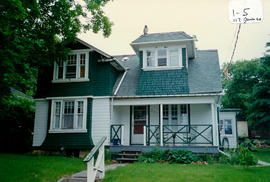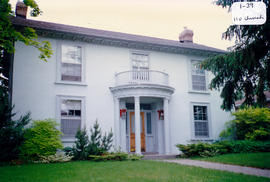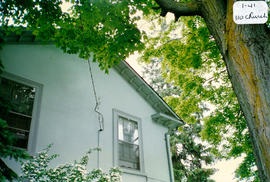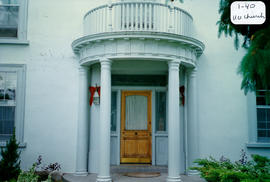117 James Street - The Isaac Coburn House
- CA BWGPL GJ-HB-2017-04-01-18
- Item
- 1996
Parte de George Jackson fonds
The Isaac Cobourn House is located mid-block at 117 James Street. It was built in the Arts and Crafts style in the 1920’s by a good carpenter for his family.
The 1½-storey bungalow has an asymmetrical, ‘L’-shaped plan. There are wide, window openings with low, floor to ceiling heights. The steeply-pitched, gable roof has some eclectic features. It extends down to reduce the scale of the building from the street. There is an off-centre, hall entrance from a covered, open porch. The roof over the porch is supported on wood posts. The porch is raised and has a simple, wood handrail. Wood lattice encloses the underside. A wide band of windows across the front of the dormer emphasizes the horizontal lines and massing of this house. Wide, triple windows at the ground and second floors, and the front door are set into rectangular openings with plain, wood trim and sills. The second-storey windows are offset from the ground-floor windows. A mix of exterior cladding materials and the wood fascia band expressing the line of the floor structure between the ground and second floors is common to this style. There is a truncated, hip roof on the dormer over the front porch. The base of the dormer and front, bay window splay out at the bottom. There are returned eaves at the roof of the projecting, front bay. The house has wood frame construction with wood siding, and painted, wood shingles on the roof, dormer, and bay window. A concrete foundation is also painted. According to the 2000 inventory, the house is in good condition with many original features that have been maintained well. (1, 3)
Sem título










